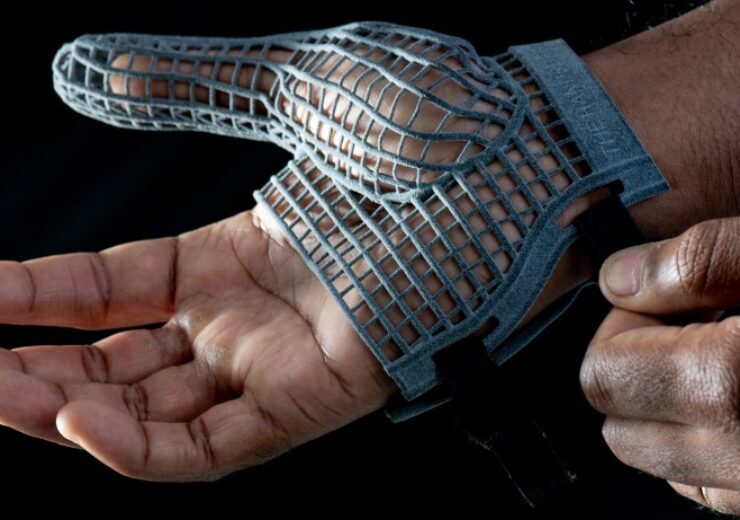Growth in the 3D-printed wearables market has been attributed to increased demand for healthcare products that are both portable and patient-specific

Last year, Jaguar Land Rover announced it was working on a lightweight 3D-printed glove to help protect employees from the threat of a musculoskeletal disorders (Credit: JLR)
The value of the 3D-printed wearables market is set to increase by more than 70% between now and 2027, says an analyst.
The market, which includes prosthetics and orthopaedic implants – as well as smart watches and other fitness trackers – is currently worth about $3.2bn in 2020.
A recent report by market research firm Grand View Research indicates the sector will expand at a compound annual growth rate (CAGR) of 8.2% over the next seven years, and is likely to be worth $5.5bn by 2027.
Grand View Research attributes this growth to an increased demand for portable medical devices, and healthcare-related products that can be customised to suit a customer’s specific needs – which is one of the key benefits often associated with 3D-printed items.
In its report, Grand View Research stated that the “major factor” driving the market for 3D-printed wearables is a growing demand for uniquely-designed products that hold the potential to overcome limitations surrounding more conventional devices.
“With the help of 3D printing, companies can design a device as per their customers’ requirements,” it added.
“The other factors driving the market for 3D-printed wearables are increasing focus on health by both the general public and consumer technology companies.
“At present, there is more of a burden on manufacturers of medical devices and pharmaceutical companies – by the government as well as customers – to be environmentally and socially conscious.
“And, with the help of 3D printing, transportation cost is dramatically reduced. Although this is still a niche market, it is anticipated to increase in the coming years.”
The 3D-printed wearables market
According to Grand View Research, the 3D-printed wearables market consists of five main product types – prosthetics, orthopaedic implants, surgical instruments, smart watches and fitness trackers.
Due to the rising prevalence of chronic diseases and increasing demand for prosthetic implants in developing countries, the prosthetics segment currently accounts for the largest revenue share of this market, at 35.9%.
Grand View Research anticipates, however, that 3D-printed surgical instruments will experience the fastest growth of any segment between now and 2027, with a CAGR of 8.6%.
It also stated in its report that “numerous manufacturers have invested in the R&D of 3D-printed wearables” already – due to increased demand for these types of technologies within the healthcare industry.
Key players in the current market include US-based firm 3D Systems, German 3D printing specialist EnvisionTEC and Dutch healthcare giant Philips.
